Red Fish Fishing Tips
Fall Fishing Week #3
Kelsey Dick finishes Octobers United Women on the Fly fall fishing tuesday tips. This week, Kelsey shares tips to be successful when fishing for red fish. Follow Kelsey at @thebeardlessfisher.
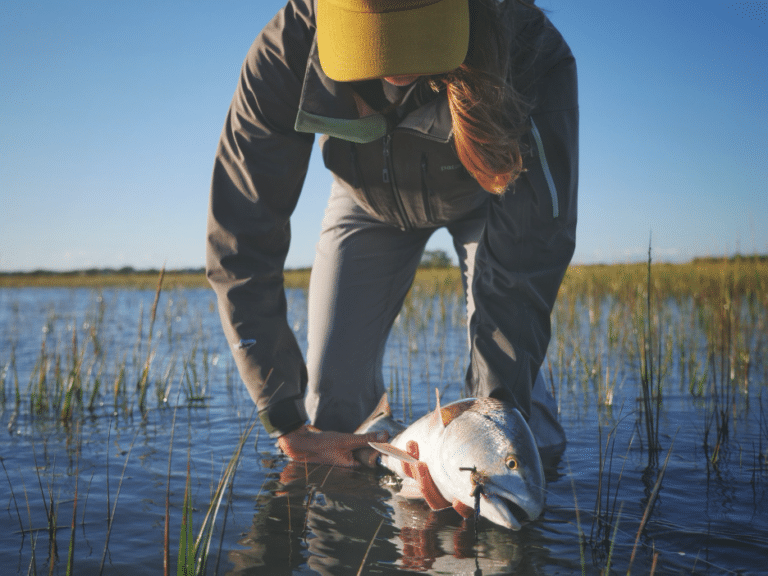
look for the right habitat
Here in the Low Country, we are fortunate to experience flood tides. A flood tide is generally any tide that is above a 5-foot 9-inch tide. Water comes up into the marsh grass flats where fiddler crabs and other tasty marsh critters live with the higher tides. Two hours before or after the high tide, or peak flood, is when the reds come up onto the flats and feast on fiddlers. These are the golden hours when fly anglers can sneak up onto flats, either by wading or with a flats boat, and find tailing redfish.
Everyone focuses on catching the fish, but finding them and stalk them on your own brings a whole new level of accomplishment. Use wind, tide, and weather apps to help locate the optimal place to fish. I also frequently look at google earth to find optimal habitats for redfish. If you don’t have a boat, the use of google maps can also help you find places to wade into the water from a road or other access point.
Once you start finding redfish, take note of the habitat around you and find more areas with a similar environment. It is a pretty incredible feeling to predict where fish might be, roll up to a flat, and see tails everywhere.
A flood tide is generally any tide that is above a 5-foot 9-inch tide.
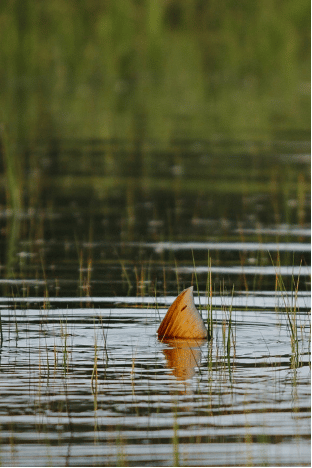
Don't Cast at the Tail
Generally, when you see a tailing redfish, they are hunting crabs by putting their face down to dig in the mud, causing their tails to wave out of the water. Often, when I take people fishing and spot a tailing redfish, the first thing they want to do is cast directly at the tail. This almost always ends up spooking the fish. Great flats anglers can look at the tail and determine which way the fish is facing and moving.
Remember, these fish are actively feeding, and to get one to bite, you need to imitate their prey. Take a moment, determine which way their head is facing, and assess where they might be moving to next. Once you know where they are likely to move, cast a few feet from the fish into their anticipated path. Slowly strip and see how the fish reacts. You want to be able to lead the reds to your fly. Not throw it on top of their head.
Take a moment, determine which way their head is facing, and assess where they might be moving to next.
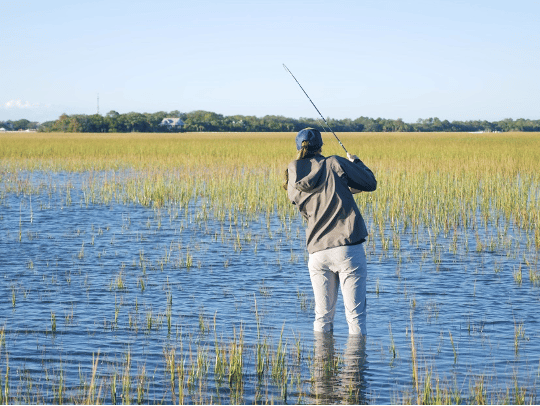
Remember, the time you have with a tailing redfish is limited, and flies don’t catch fish out of the water.
Limit false casts
When hunting reds, you need to be ready to cast at all times. This means having the fly line cleared and the fly in your hand while you are on the lookout for reds. Once you see a red and ready to cast, throw your fly out and make only 2-3 false casts before shooting the line. Usually, anglers want to cast and cast and cast. Remember, the time you have with a tailing redfish is limited, and flies don’t catch fish out of the water.
Make limited casts and get your fly in the water. If the redfish did not see your fly or changed directions, pick up the fly line, make only 2-3 false casts, and lay the line down again. To get good at this practice picking up a lot of fly line to cast and shoot.
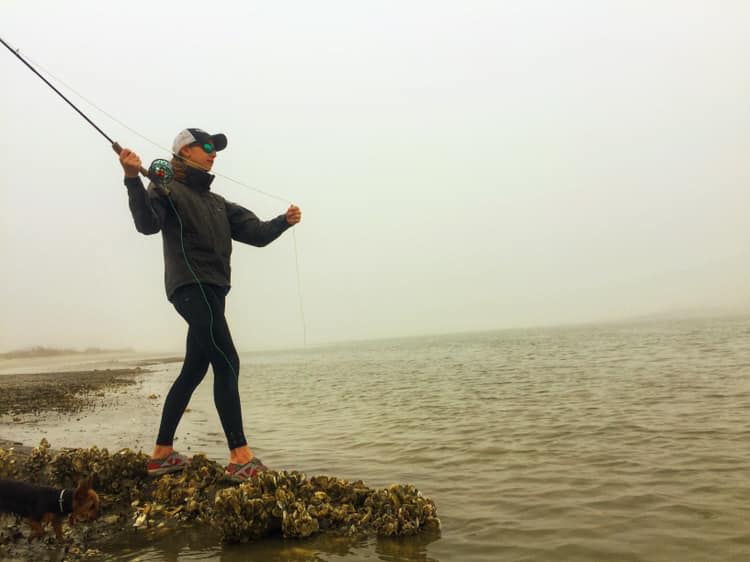
Fly Casting Drill
To practice, cast your line out and only take one or two strips before picking up the line to recast and shoot. While it is great to practice this in your yard, practice picking up the fly line off water. Water adds weight to the line and requires a bit more oomph than casting line off the grass. This tip will tremendously increase your shots at the redfish and allow you to become an aggressive angler.
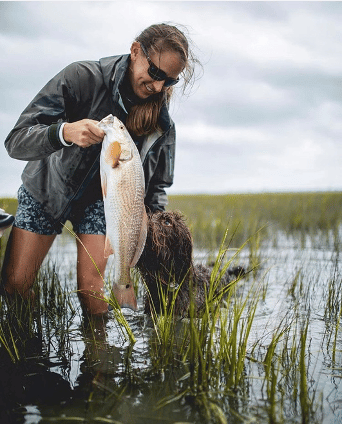
Meet the Author - Kelsey Dick
Kelsey currently works for Shimano and G. Loomis on the fish marketing team. When she isn’t working, she is on the water on her 16ft skiff with her dog Darwin. Kelsey’s love for the outdoors and fishing began at an early age and eventually led her to a fishing industry career. Growing up with parents who valued the outdoors and spending summers at the beach in North Carolina fostered her curiosity and passion for nature. She graduated with a degree in Biology from The Ohio State University. She worked on Lake Erie for a few years before receiving her masters from Duke University in Fisheries Management. She moved to Charleston, South Carolina, to work for the federal government in fisheries management. She started her businesses, Cast Away, where she teaches people to throw large cast nets for shrimp and baitfish, a popular fishery in the Low Country. This past year, Kelsey joined the Shimano and G. Loomis marketing team. While she loves to travel searching for her next catch, spending time on her skiff exploring with her dog Darwin is her favorite.
Follow her (and Darwin) on Instagram @thebeardlessfisher or FaceBook at Kelsey Dick. She is always sharing pictures and videos of Low Country catches, gardening, her navigation of boat
Tuesday tip Contributors Needed
We would love your Tuesday Tips. Please fill out the following form and we’ll send you information for writing a Tuesday Tip.


